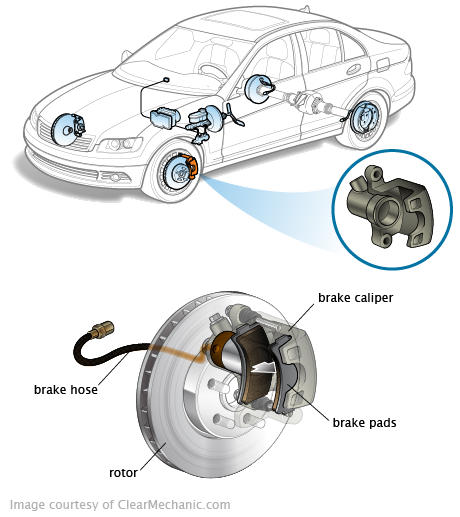
Advice from the 106 St pros...
We bet you thought the word is caliber, right? As in .45mm? Hey, we're from the 'hood, too, so we understand.
However, the word is caliper and each brake has one but does your ride have 2 or 4. That depends on type of braking system you have. Check your owners manual if you don't know. Don't have it, download it by Googling year, make and model for your car bible.
Brake calipers are one of several important parts composing your braking system, and, for God's sake, this is NYC. Queens epitomizes the "severe" driving conditions we speak of often here in this blog...crowded roads, stop and go traffic, sudden stops, NYers in a rush to dart out into traffic to test your brakes and sue your you know what, etc. Pass this test, friends, don't leave home without a good braking system.
The combinations of brake pads and brake calipers perform a huge safety task. They change your vehicle's motion to a stop...a fast stop, a screeching stop, a slow and steady stop, but, a stop which is imperatively important when driving, right?
Our blog is about educating our customers so let us tell you how you know your brake calipers are bad by sharing the steps below:
1) Eye balling the exterior of the caliper, then, check its operation
You will need a friend to step on the brakes while you are watching it. Here's what you are looking for: look for cracks and brake fluid seeping. Brake fluid comes in many colors so don't be surprised if you see blue or yellow brake fluid and it could be just wet or streaky if it is leaking. If you do see cracks, the brake caliper needs to be replaced. If the caliper does not move or you can still turn the rotor with the brakes applied, check whether or not brake fluid is reaching the caliper. Do all brakes like this.
Step 2: Is brake fluid reaching the caliper?
Please locate the air bleed valve on the back side of each caliper. Get a small hose and attach it to the valve. Place the other end of the hose in a clear plastic drinking cup or a glass jar half filled with clean brake fluid. Put the end of the hose into the clean brake fluid submerged below the brake fluid surface. This keeps air from getting into your braking system. Open the valve and have a friend apply the brakes. If fluid flows into the cup, then fluid is reaching the caliper. If you see bubbles then air is in the system. That must be removed. If no fluid flows into the cup/jar, check your master cylinder and brake lines for other issues. If you observe that additional brake fluid flows into the receptacle the problem is the caliper.
Step 3: does your caliper float properly?
If the brake caliper moves when the brakes are applied, it's important to pay attention to how smooth that movement is. One problem could be that the floating pins need lubrication. If the caliper doesn't move, watch the brake pad itself to see if it shows any signs of attempting motion. If your brake pad tries to move, then the piston behind the pad is probably working and the brake caliper is not floating properly. The floating pins may be damaged or, perhaps, they need to be removed, cleaned and greased.
Step 4: checking to see if the piston is working properly
When you apply your brakes, the piston should push on one of the brake pads. This will cause the caliper to float. Since a second brake pad is connected to the floating part of the caliper, the two brake pads squeeze the rotor, causing it to stop rotating. If your brake pad in front of the piston doesn't try to move when the brakes are applied, there's a problem with the piston. It's best to replace the caliper as a unit if your piston is bad.
We know it's difficult to keep your brakes in good working order and responsive in stop and go driving in Queens, NYC and the vicinity. Our style of driving poses deep challenges and can reduce the wear you will get from your brakes in our "severe" driving conditions.
106 St Tire & Wheel does free brake inspections day or night and includes them in our 47 point free safety inspections. We offer Napa brake replacements at a great price at all locations. We charge $65 per axle for most cars and we take appointments for this service as we strive to save you money, offer convenient service and keep all of us safer.
Want to make an appointment? You can from our website by clicking SERVICES in the navigation bar across the top of the site on the blue field. It's the fourth one from the left. Click it, a drop down menu will appear, select SCHEDULE APPOINTMENT, fill out all of the information. If the appointment you want is past 5 PM, please call 718-446-6769 (we're open 24/7) and we will set you up manually.